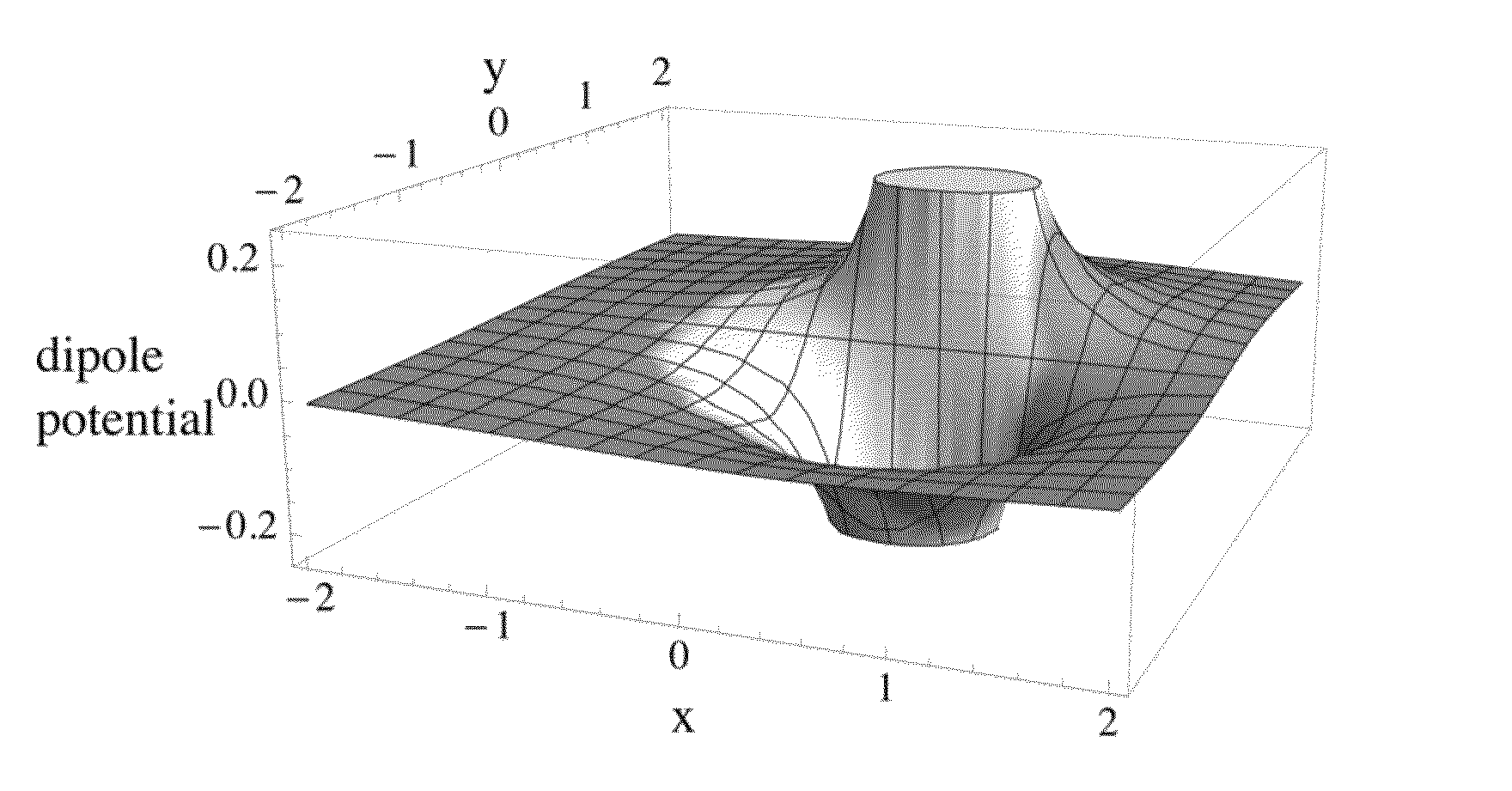Computer simulation of electromagnetic fields
- Summary
- Abstract
- Description
- Claims
- Application Information
AI Technical Summary
Benefits of technology
Problems solved by technology
Method used
Image
Examples
Embodiment Construction
[0045]Description without Equations
[0046]Introduction
[0047]Much of engineering, including electrical, electronic, and optical engineering, is based on physics and mathematical physics. Physics identifies, or aims to identify, rules or laws of nature using a mathematical language. These general laws of how the world behaves may be used in an infinite number of ways to create or help create specific practical results. Neither the laws of nature nor the language of nature (mathematics) are patentable, while practical inventions that are created by using, combining, and applying them in novel specific ways are patentable.
[0048]But the dividing line between these is not always clear. In development of the methods described in this provisional patent application, I have used some very well established laws of nature (Maxwell's equations of electrodynamics) and some less well known mathematics (geometric algebra) to write or derive some mathematical relationships between physical quantitie...
PUM
 Login to View More
Login to View More Abstract
Description
Claims
Application Information
 Login to View More
Login to View More - R&D
- Intellectual Property
- Life Sciences
- Materials
- Tech Scout
- Unparalleled Data Quality
- Higher Quality Content
- 60% Fewer Hallucinations
Browse by: Latest US Patents, China's latest patents, Technical Efficacy Thesaurus, Application Domain, Technology Topic, Popular Technical Reports.
© 2025 PatSnap. All rights reserved.Legal|Privacy policy|Modern Slavery Act Transparency Statement|Sitemap|About US| Contact US: help@patsnap.com



